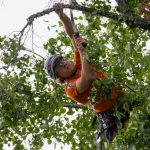Overview of the Current Landscape for Emerging Sports Talent in the UK
The UK sports talent development landscape has evolved, with numerous pathways supporting young athletes aiming for excellence. Grassroots programs and school-based initiatives form the foundation, offering early exposure to various sports. However, the system remains fragmented, with varying availability of quality coaching and facilities across regions. Many young athletes depend on local clubs, which often operate with limited resources, affecting their ability to identify and nurture emerging talent effectively.
Challenges for young athletes in the UK include balancing academic demands with training, navigating inconsistent support structures, and overcoming regional disparities in opportunities. Despite these hurdles, structured support systems—such as community sports centers and national governing bodies—provide essential frameworks. These institutions facilitate training camps, development squads, and talent identification events that help recognize potential at an early stage.
Also to discover : How Can UK Sports Culture Influence Global Athletic Trends?
In summary, while the UK sports talent development scene shows promise, addressing the uneven distribution of resources and enhancing coordination among existing sports support systems remains critical to unlocking the full potential of emerging talent.
Major Challenges Hindering Talent Development
Emerging athletes in the UK face significant youth athlete barriers that slow progress in sports talent development. One of the most pressing challenges is limited access to quality coaching and facilities. Many regions lack consistent, high-standard resources, leaving aspiring athletes without the necessary support to reach elite levels. This ties closely to accessibility in sports, where geographic and socioeconomic factors create uneven opportunities. Young athletes from less affluent backgrounds often struggle to afford training, equipment, or travel to specialized centres, limiting their development potential.
In parallel : How Have Recent Policy Changes Impacted the Landscape of UK Sports?
Inconsistent funding for young athletes adds another layer of difficulty. Budget constraints at local clubs and community programs result in fluctuating availability of coaching staff and training sessions. This inconsistency can disrupt progression and reduce motivation. Additionally, funding disparities between regions mean some talented youths receive far less support than others simply due to their location.
Addressing these challenges requires a coordinated effort to ensure equitable distribution of resources, increased investment in grassroots infrastructure, and targeted programs that reduce socioeconomic barriers, making the UK sports talent development environment more inclusive and sustainable.
Leading Initiatives and Programs Supporting Emerging Talent
National talent identification programs play a crucial role in spotting promising athletes early in their development journey. These initiatives often include trials, performance assessments, and competitions designed to recognize potential regardless of an athlete’s background. The UK has implemented several such schemes that collaborate with local clubs and schools to widen the talent pool.
Prominent UK sports academies form another key pillar of athlete development. These academies offer structured training environments with experienced coaches, access to quality facilities, and tailored athletic and academic support. Many successful athletes attribute their growth to the rigorous development and mentoring provided through these academies.
Collaboration with schools and community organizations strengthens youth development initiatives by embedding sports into education and daily life. Programs often focus on outreach to underrepresented groups, aiming to reduce barriers linked to geography or socioeconomic status. By building partnerships between schools, clubs, and national bodies, these initiatives create sustainable pathways that guide young athletes from grassroots to elite levels.
Insights and Recommendations from Sports Experts
Sports experts consistently emphasize that addressing youth athlete barriers requires tailored policies and improved sports governance UK frameworks. Recent studies highlight that inconsistent funding for young athletes undermines long-term development and propose stable, needs-based financing to enhance accessibility and continuity. Experts advocate for policies prioritizing equitable resource distribution, ensuring all regions benefit from quality coaching and facilities.
A core recommendation involves strengthening collaboration among sports support systems to create seamless development pathways. By aligning national bodies, clubs, schools, and community programs, athletes experience consistent guidance and opportunity.
Experts also stress the importance of embedding education about athlete wellbeing and mental health within development programs, recognizing the challenges young athletes face beyond physical training. Data-driven approaches are encouraged to optimize talent identification and monitor progress effectively.
Finally, transparent governance models that include athlete representation can improve decision-making and accountability. These steps collectively support a more inclusive and efficient talent development environment, allowing emerging UK athletes to thrive on national and international stages.
Overview of the Current Landscape for Emerging Sports Talent in the UK
The UK sports talent development environment is marked by both opportunity and challenge. Young athletes often rely on fragmented sports support systems that vary widely in quality and availability across locations. These inconsistencies create significant challenges for young athletes, making uniform progress difficult. Core barriers include limited access to expert coaching and high-standard facilities, which are frequently concentrated in major urban centres. Additionally, regional disparities in resources hinder equitable growth for emerging talent.
Schools, local clubs, and community programs form the backbone of talent development, though they frequently operate under constrained budgets and staffing. This impacts the consistency and reach of training opportunities. Despite this, national bodies have introduced frameworks to coordinate efforts, but full integration remains a work in progress.
Addressing these issues requires a cohesive strategy that strengthens sports support systems to reduce fragmentation, improves resource allocation, and equips young athletes with accessible development pathways. Enhancing collaboration between grassroots programs and elite institutions will create a more balanced landscape that supports the diverse needs of UK’s emerging sports talent.
Overview of the Current Landscape for Emerging Sports Talent in the UK
The UK sports talent development environment presents a mix of promise and notable obstacles. Aspiring athletes often navigate fragmented sports support systems, where quality coaching and facilities vary starkly between regions. This uneven distribution creates significant challenges for young athletes, impacting consistent progress towards elite performance.
Key barriers include limited access to specialist coaching, especially outside major urban centres where resources concentrate. Local clubs and schools, though vital, face funding and staffing constraints limiting the availability of structured training programs. Additionally, socioeconomic factors compound difficulties, restricting opportunities for talented individuals from less affluent backgrounds.
Despite these hurdles, multi-level support structures exist. These include grassroots clubs, community programs, and national governing bodies that collaboratively provide access to competitions and talent development initiatives. However, integration between these systems remains inconsistent, contributing to a lack of seamless pathways for young athletes.
Improving this landscape depends on better resource allocation, coordinated efforts among stakeholders, and enhanced accessibility. Doing so will help mitigate challenges for young athletes and create a more equitable and effective framework within the UK’s sports talent development ecosystem.










